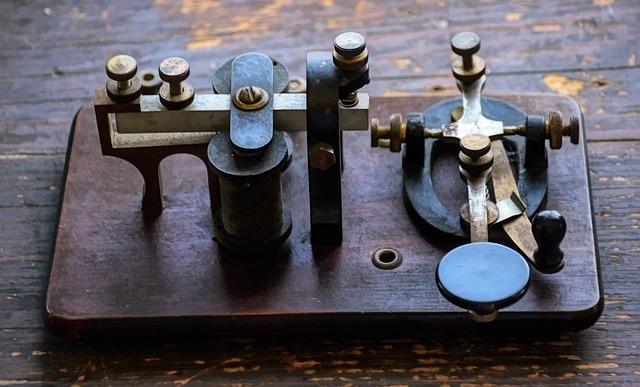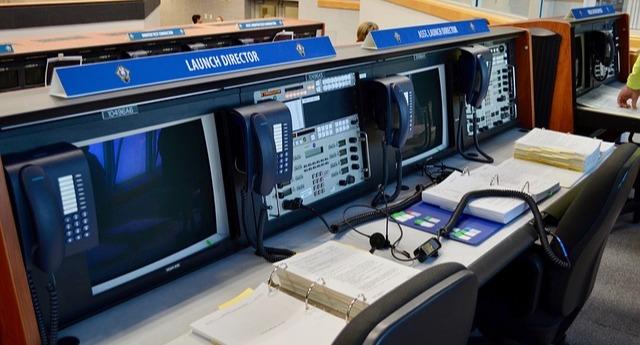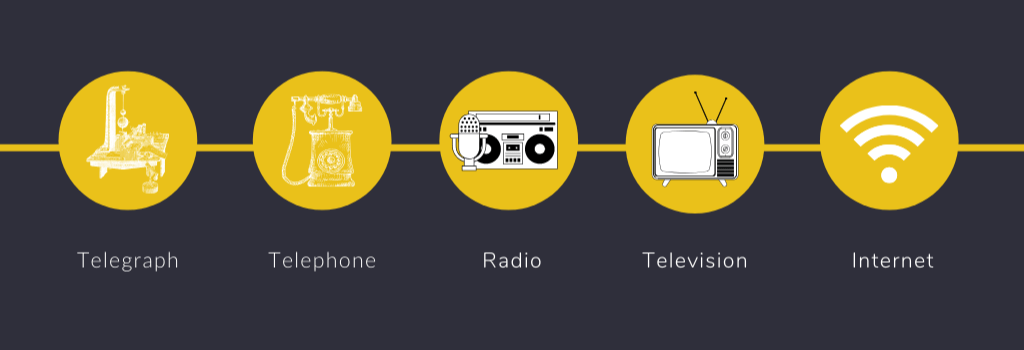How well-read are you when it comes to the history of telehealth?
Telehealth’s emergence during the COVID-19 pandemic may seem like it happened overnight. The coronavirus has certainly been a catalyst for our industry’s reliance on virtual care.
However, telemedicine has been around for quite some time. What may appear to be a sudden surge has truthfully been a slow burn.
The concept and practice of using telecommunications technology to remotely diagnose and treat patients has been around for decades.
We understand that some healthcare organizations may feel outpaced by the new demand for video conferencing solutions. Others may be weary of trusting what looks like a brand new technology.
As a result, this article will explore the history of telehealth, which happens to stretch back over a century.
If it’s difficult to trust telemedicine in the present, we hope the technology’s long history can eliminate any concerns about its longevity or staying power.
The History of Telehealth: A Timeline
Pinpointing where and when the history of telehealth begins depends on how you define it.
For example, a case can be made that telemedicine began hundreds of years ago when Europeans transmitted information about the bubonic plague by smoke signals or heliographs.
With all due respect to such Middle Ages ingenuity, we won’t be looking that far back into the past.
For the purposes of this article, let’s consider telehealth as the use of telecommunications technology to provide and exchange medical information and services.
1) The Civil War and Telegraph Transmissions
Communication across long physical distances was revolutionized with the invention of the electric telegraph in the 1840s.
The first major instance of telecommunications for medical purposes comes about a decade later, when 15,000 miles of telegraph cable was laid during the Civil War.
The telegraph made remote wartime communication possible. It was used to order medical supplies and transmit casualty reports.
The tech was so integrated that telegraph wagons commonly idled right behind the frontline, sending and receiving information from the battlefield as needed.

2) The Telephone Revolution
In 1876, Alexander Graham Bell was awarded a patent for his telephone and the rest, as they say, is history. This was a monumental step in remote communication, one which medical professionals quickly adopted.
Articles from a late 19th-century medical journal report the use of the telephone to cut down on unnecessary office visits as early as 1879.
The telephone allowed doctors to consult with their peers as well, enriching the larger healthcare community.
3) Radio Communication Emerges
Radio communication saw its beginnings at the turn of the century, and was still a developing technology during the early 1900s.
One of the first telehealth efforts that incorporated radio communication came out of Australia in 1928. Reverend John Flynn founded the Aerial Medical Service (AMS), which used the telegraph, radio and airplanes to deliver treatment to remote areas of the country.
Doctors consulted and diagnosed patients using a combination of telegraph and radio communication. Then, the service flew a qualified health professional to the patient to provide any necessary care.
The AMS received international attention and is considered to be the first organization to address limited geographical access to healthcare with telecommunications technology.
Fast forward a few decades and radio communication was commonplace all over the world. By the time of the Korean and Vietnam conflicts, the US military relied heavily on telemedicine via radio to dispatch medical teams and helicopters.

4) The Television Adds Visual Component to Telehealth
The invention of the television made visual telecommunications a reality, which proved to be a valuable tool for early telemedicine practitioners.
By the mid 1950s, the Nebraska Psychiatric Institute was using closed-circuit television to remotely monitor patients. By 1959, the institute was providing group therapy and long-term therapy, consultation-liaison psychiatry, and medical student training at Norfolk State Hospital.
In 1964, the two locations established their first interactive, two-way video link, negating the 112 miles between them.
Then, three years later, the first comprehensive telemedicine system was installed to connect Boston’s Logan Airport medical station to Massachusetts General Hospital.
Besides facilitating remote medical treatment between the two locations, the operation also demonstrated that remote diagnoses could be made through interactive television. Researchers showed that X-rays, lab results and medical records could be successfully transmitted as well.
5) Space Travel and NASA Push Telehealth Forward
Telemedicine got its first modern upgrade in the 1960s due to one central question: could the human body function in outer space?
This was a true unknown before the first human astronaut made it to space. Medical experts were particularly concerned about blood circulation and respiration issues.
To find out, the US and Soviet hooked animals up to medical monitoring systems and sent them into space. Biometric data was transmitted back to scientists on Earth via a telemetric link.
A few years later, NASA established the Integrated Medical and Behavioral Laboratories and Measurement Systems (IMBLMS) program.
It was meant to develop a system that could acquire, display, analyze and record, “…a wide variety of medical, biochemical, microbiological, and behavioral, measurements and experiments designed to study in detail man’s well being and operational capability…”
That is straight from the program’s final report in 1970. Sounds remarkably similar to the telehealth we know and love today, doesn’t it?

6) Telehealth Gets an Injection of Federal Money
In the late 1960s and early 1970s, the federal government provided funding for seven telemedicine research and development projects. They aimed to further explore how the technology could be used to overcome challenges to medical care of the time.
The majority of them took place in rural areas, where access to healthcare was already an issue.
One of these programs was an extension of NASA’s IMBLMS program, called the Space Technology Applied to Rural Papago Advanced Health Care (STARPAHC). It leveraged the remote monitoring tech they developed for space travel to serve terrestrial, rural populations.
The project was conducted on the Papago reservation in Arizona. It evaluated the practicality and efficacy of a large scale telemedicine operation.
STARPAHC demonstrated that telecommunications were a sound foundation for remote treatment. Furthermore, telemedicine proved to be a viable and effective alternative to traveling across great distances to receive medical attention.
7) The Internet Transforms Telemedicine
As we are all aware, the internet changed everything.
The speed with which humans could communicate and transfer information was revolutionary.
In the case of telemedicine, the internet was essentially the technological breakthrough it had been waiting for.
Scientists and medical experts had more opportunity, and more dynamic tools, to conduct remote treatment.
The internet unlocked a new frontier for telehealth, due to factors such as:
- Digital tech made the efficient transmission of large quantities of data over long distances possible. As a result, telemedicine’s speed and scope was forever enhanced.
- The digitization of information made sending, receiving, managing and storing data much easier.
- The internet’s widespread adoption in all personal and professional settings led to substantial cost savings for the digital technology needed to deliver telemedicine.
Telemedicine has been consistently improved and refined over the last few decades, but powerful digital technology is still the foundation of our telehealth operations today.

What Should I Do With This Information?
We hope that learning about the history of telehealth has made the tech seem a little less abstract and cutting-edge, and a little more accessible to anyone still resisting it.
Two things stand out to us about this timeline:
- There has been demand for remote healthcare for centuries, to which scientists and medical experts have consistently provided the best solutions available to them.
- The technology used to deliver telemedicine is constantly improved and refined, which reflects the world’s growing appetite for on-demand, remote, mobile data.
Looking at it this way, the concept and technology of telemedicine has been peer reviewed by some of the brightest minds in healthcare and science.
The groundwork that led to our current ability to speak to our doctors on a mobile phone is extensive.
That is not to say that the sudden reliance on telehealth to manage the risk of COVID-19 isn’t disorienting. Care providers and patients alike are still adjusting to the shift to remote treatment, and rightfully so.
However, there is no need to make that adjustment any harder by worrying about the validity of telemedicine as a treatment method.
Here at Sigmund, we are encouraged by the fact that more people than ever are being exposed to this thoroughly developed healthcare tool.
The Virtual Care Environment in 2021
As you can see, there is a long history of technological innovation that led to us being able to speak to a doctor without living our house.
If this article has stirred any new interest or trust in telehealth, we would love to show you what a highly functional telehealth platform looks and feels like. Speak to one of our knowledgable professionals about AURA Telehealth today!
Video-conferencing software hasn’t been the only tech that’s required an upgrade during the pandemic. EHR features like the patient portal have become integral to delivering comprehensive care throughout COVID-19. A standalone telemedicine solution no longer makes the cut. Providers must be able to offer their patients a reliable digital space to engage with their care so that treatment remains seamless and effective.
Matthew Prete, Sigmund’s VP of Software Development and Information Technology, recently presented a webinar that examined the true potential of the virtual care environment. He explores a variety of crucial patient engagement solutions that allow providers to deliver thorough and patient-centered care, even under the constraints of the pandemic.
If you want to see what a dynamic and exhaustive virtual care environment looks like, you can view his presentation in full by clicking the button below.
Virtual Care Is So Much More Than Telehealth: Embracing all the Tools of the Digital Care Environment
Watch Now!
